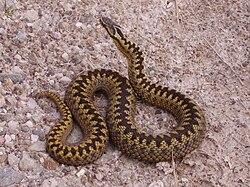Amphibians
| Scientific name | Common name Swedish name | Description | Image | Notes |
|---|---|---|---|---|
| Bombina bombina | European fire-bellied toad Klockgroda | 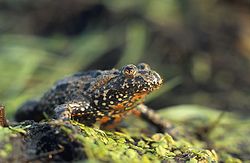 | ||
| Bufo bufo | Common toad Vanlig padda | Adults are about 15 centimetres (6 in) long and colored brown, olive-brown or greyish brown. | 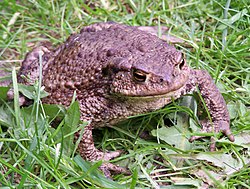 | |
| Bufotes viridis | European green toad Grönfläckig padda | 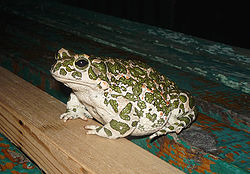 | ||
| Epidalea calamita | Natterjack toad Strandpadda/Stinkpadda |  | ||
| Hyla arborea | European tree frog Lövgroda |  | ||
| Pelobates fuscus | Common spadefoot Lökgroda |  | ||
| Pelophylax kl. esculentus | Edible frog Ätlig groda | Female adults are 5 to 9 centimetres (2 to 4 in) long and males are 6 to 11 centimetres (2 to 4 in) long. |  | It is a fertile hybrid of the pool frog and the marsh frog. |
| Pelophylax lessonae | Pool frog Gölgroda | 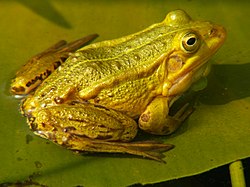 | ||
| Rana arvalis | Moor frog Åkergroda |  | ||
| Rana dalmatina | Agile frog Långbensgroda | 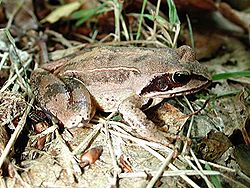 | ||
| Rana temporaria | Common frog Vanlig groda | Adults are about 6 to 9 centimetres (2.4 to 3.5 in) long. They and colored olive green, grey-brown, brown, olive-brown, grey, yellowish or rufous. |  | |
| Triturus cristatus | Great crested newt Större vattensalamander |  | ||
| Lissotriton vulgaris | Smooth newt Mindre vattensalamander |  |




